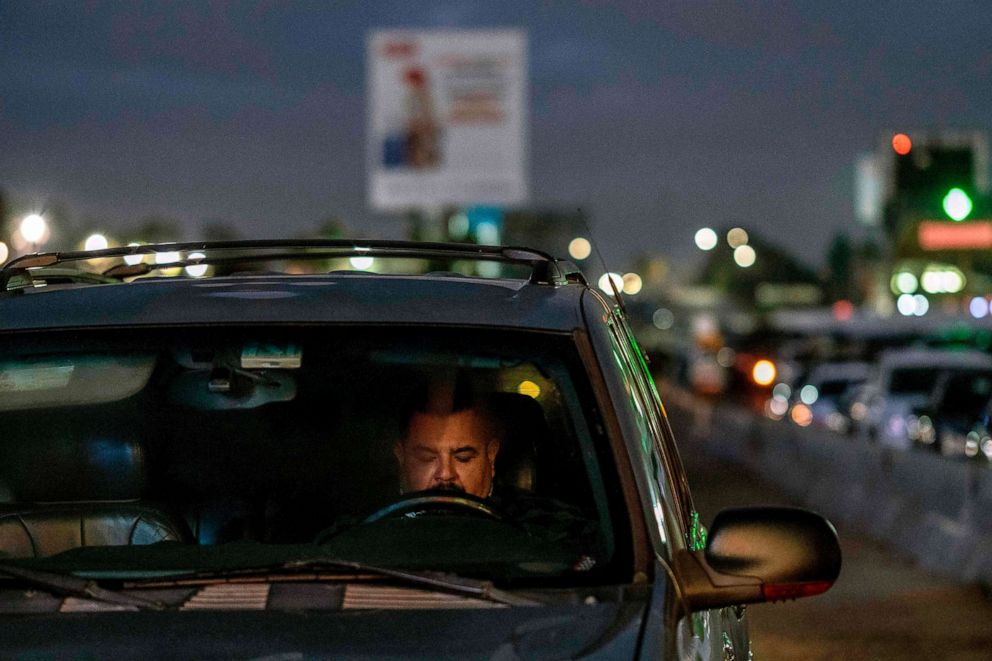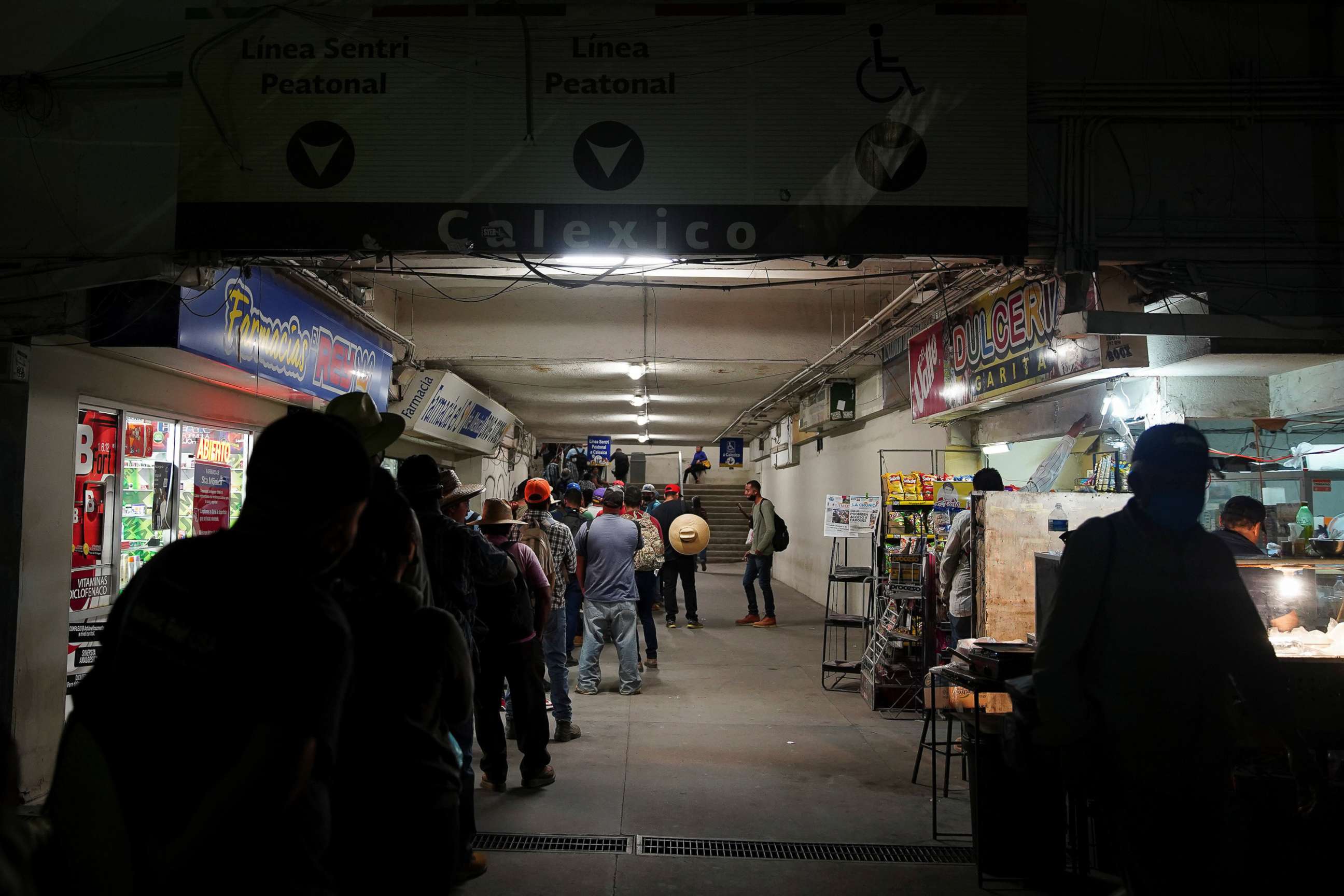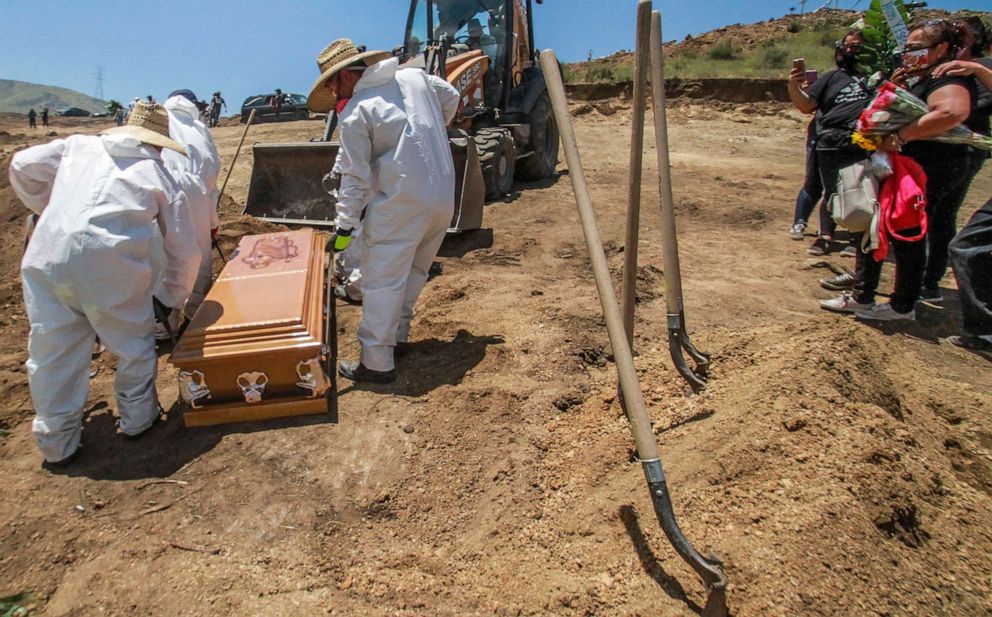Thousands crossing US-Mexico border despite nonessential travel ban, COVID-19 threat
Health checks are few and cases are up in San Diego County.
As the coronavirus pandemic grips Mexico, thousands of vehicles a day are still crossing the border with the U.S. -- despite a ban on nonessential travel.
Lines of traffic that stretch for miles can be seen in Tijuana, Mexico, with essential workers traveling to jobs in the U.S. and dual citizens and even sick American retirees crossing to San Diego for treatment.
There are a few health checks.

U.S border officials look for signs of illness and may take temperatures if they think it's necessary, but there are concerns that the virus is moving back and forth across the border.
The number of COVID-19 cases are way up just across the border in California's San Diego County.
Health care professionals at Scripps Mercy Hospital in Southern California told ABC News that roughly 48% of their patients had crossed the border in recent weeks.
"Talking to the people on the wards is that there seems to be a lot either living or working on both sides of the border," said Dennis Amundson, director of the intensive care unit at Scripps Mercy.

Scripps Hospital System told ABC News recently that it was sending patients to hospitals in the northern part of the county because there are too many in their wards in southern San Diego County.
Many have been U.S. citizens who live on the Mexican side of the border, but work in the U.S., the hospital said.
Meanwhile, in Mexico, the number of deaths due to coronavirus has been rising relentlessly.
ABC News watched large funerals for coronavirus victims with no apparent social distancing. There are currently more than 8,500 deaths due to the virus in Mexico. The group Mexicans Against Corruption and Impunity released a report in mid-May saying the actual total might be as much as three times higher.
On Thursday, President Donald Trump said during a briefing that the U.S. was sending ventilators to Mexico, as well as Brazil, which he noted had also been hit hard by COVID-19.
Brazil is projected to have 125,833 deaths by Aug. 4, according to the University of Washington's Institute for Health Metrics and Evaluation.
"Mexico is having a very, very hard time, as you know, with COVID, especially along the border, with Tijuana and various places along the border," Trump said during Thursday's briefing.

Trump said Mexico had a "record" number of COVID-19 cases -- though it's unclear what record he was referring to as the U.S. leads globally in most deaths and cases -- and "sadly" the highest number could be found along Mexico’s border with the U.S.
"Fortunately we have brand-new wall along there, and the wall is saving us," Trump said, apparently referring to a new portion constructed in September 2019.
Despite the images of fresh graves in Mexico, eerily similar to Brazil -- which is suffering the world's second-highest death toll behind the U.S. -- Mexican officials plan to relax restrictions for business and tourism next week.
Tune into ABC at 1 p.m. ET and ABC News Live at 4 p.m. ET every weekday for special coverage of the novel coronavirus with the full ABC News team, including the latest news, context and analysis.
ABC News' Ben Gittleson contributed to the reporting in this story.




